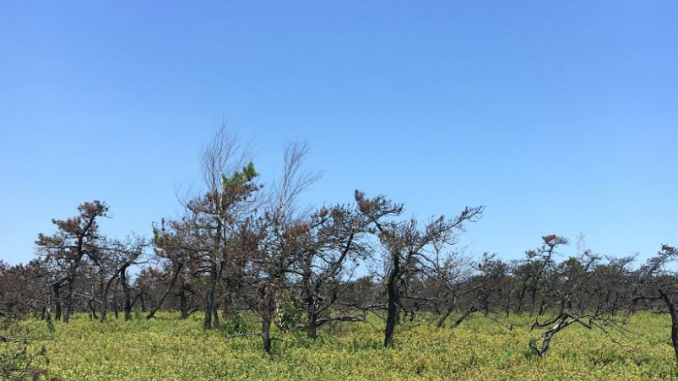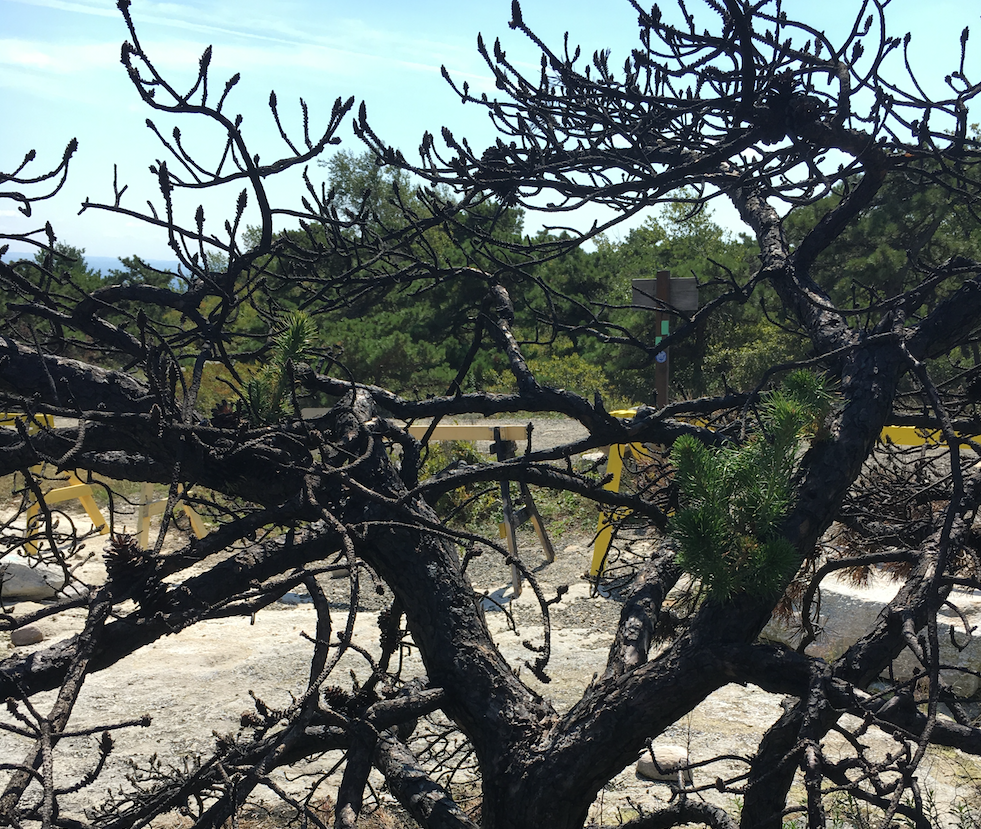

The once charred, ash covered areas of Sam’s Point Preserve affected by the massive brush fire five months ago have become sprouting fields of new plant life and swiftly budding burnt trees.
The fire which ignited on April 23, 2016 burned 1,900 acres of trees and brush, causing the park to close completely to the public until Memorial Day weekend, when it reopened with limited access to only the Loop Road and Ice Caves Trails.
Sam’s Point is home to the unique ecology of fire dependent tree species. The two major and ecologically significant are dwarf pitch pine, white pine and chestnut oak. These trees react positively to fire by opening up their seedling cones in the presence of intense heat thus spreading its seeds. However, other types of plant species that cannot survive a fire do exist among within this ecology as well.
Gabe Chapin, the forest and fire ecologist at The Nature Conservancy (TNC), said dwarf pitch pine and chestnut oak can survive becoming completely engulfed in flames because of their thick bark. This adaptation is one many other tree species lack, therefore a fire will preserve an ecosystem of solely fire-dependent trees by destroying trees that cannot withstand its heat.
Bracken fern, fiddleheads and painted trilliums are among plant species that were scorched out in the fire and can now be seen budding through. Charred dwarf pitch pine, white pine and birch that survived the fire regenerate via epicormic budding, a process by which resprouting begins along the trunk rather than at the roots.
Various types of wild berries such as blueberries, serviceberries and huckleberries have begun to repopulate— helping the forest floor regain its greenery.
The preserve has been monitoring regrowth in affected areas by the use of 20 randomly placed research plots of seedling regeneration to measure full forest growth and understand the ecology as completely as possible.
For the most part, the ecology of Sam’s Point was still in a dormant state for the winter when the fire ignited. According to Hank Alicandri, preserve director of land stewardship and chief ranger, if the fire ignited during a growing season, more “duff” would have been consumed, therefore promoting faster growing rates.
Duff is a collection of pine needles and spare brush found on the forest floor that create a barrier to the rich soil beneath for possible seedlings. Duff fuels a fire and helps it to burn more hotly and intensely.
“Where the duff is thin, there is more seedling regeneration since they are closer to the soil,” Alicandri said.
Other trails and areas at Sam’s Point such as the Scenic Trail and Smiley Carriage Road are extremely ecologically sensitive and remain closed to lower the risk of invasive species encroaching on the ecology.
According to Dominic Mayo, a Sam’s Point Park ranger and fourth-year education major at SUNY New Paltz, seeds and spores from foreign plant species can hitchhike their way into the area by riding the boots and pant bottoms of visiting hikers.
“The soil is very vulnerable right now,” Mayo said. “It is important that these areas begin to regrow as undisturbed as possible.”
These areas also remain closed due to hazardous terrain from tree stumps and uneven burnt ground that can be dangerous for hikers.
Alicandri said that since the Loop Road and Ice Caves Trail are the two most hiked trails at Sam’s Point, visitation traffic has been almost the same as during times of full park access.
“It is getting green up here!” said Alicandri. “We will try to open the rest of the park as soon as possible—we are not exactly sure when that will be, but hopefully sooner than later.”
